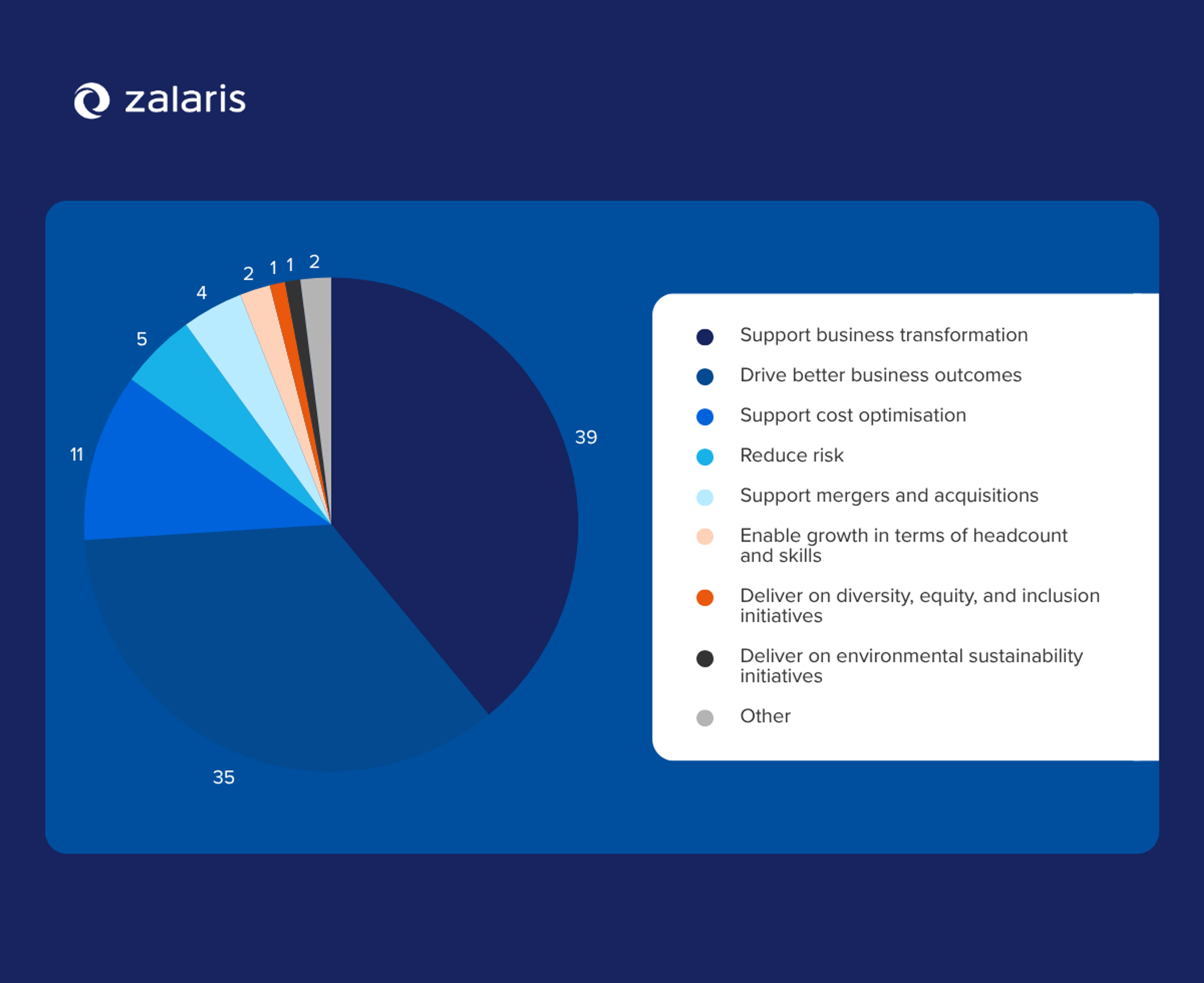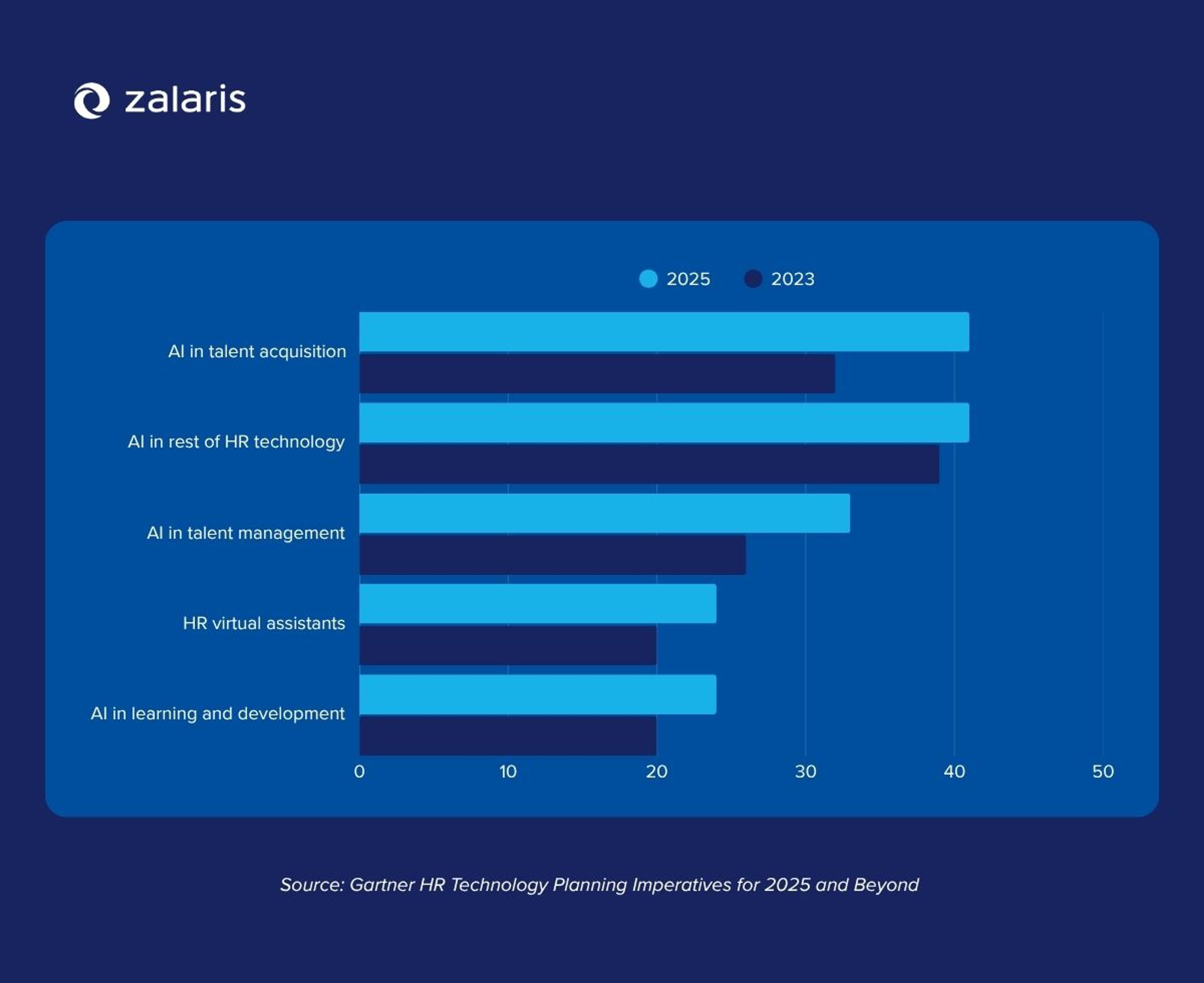The art of the ask: Securing HR technology investment amid budget constraints
Securing funding for HR technology transformation has become the primary challenge facing HR leaders in 2025. With economic uncertainty driving conservative budget approaches, building a compelling business case has never been more critical. This strategic guide reveals how successful CHROs navigate budget constraints and secure the investment needed for digital transformation.
Elliot Raba

The landscape for HR technology investment has shifted dramatically. Where user adoption once dominated the concerns of Chief Human Resources Officers, securing funding has now emerged as the most pressing challenge. Recent industry research reveals that 46% of HR leaders cite justifying and securing investment as their top hurdle, compared to 37% just two years ago.
This change reflects broader economic realities. The same survey indicates that organisations are adopting increasingly conservative approaches to technology spending, with only 35% planning to increase HR budgets. For HR leaders, this creates a perfect storm: the need for digital transformation is accelerating while available resources are shrinking.
Understanding the key objectives of HR Transformation
The most successful HR technology business cases begin with a clear understanding of organisational priorities. Recent industry research identifies supporting business transformation, particularly in response to artificial intelligence adoption, as the number one strategic priority driving HR technology investment.

Source: Gartner HR Technology Planning Imperatives for 2025 and Beyond
This evolution provides HR leaders with a powerful narrative framework. Rather than positioning technology investments as HR-specific initiatives, successful CHROs frame their proposals as business transformation enablers.
The integration of AI into workplace processes is reshaping how organisationsoperate, creating new skill requirements and changing the nature of work itself. HR technology becomes the foundation for managing this transition effectively.
Building your business case framework
Successful budget approval requires a structured approach that addresses four critical criteria:
Alignment with business objectives
HR technology investments must directly support broader organisational goals rather than functioning as isolated improvements to HR processes. This requires HR leaders to understand their organisation's strategic priorities deeply and articulate how proposed technology investments advance these objectives.
Applicability to HR processes
Effective business cases highlight how proposed investments deliver measurable benefits across the complete employee experience. This approachdemonstrates value beyond individual process improvements, showing how technology creates interconnected benefits throughout the organisation.
Technology adoption potential
Investments in solutions that employees, managers, and HR personnel will readily embrace generate higher returns and face fewer implementation challenges. Recent industry research from Gartner shows that ensuring ongoing adoption remains the second-highest concern for HR leaders, affecting 45% of organisations. Focus on frequently used processes such as:
- Time-off requests
- Performance management
- Learning platforms
- Employee self-service functions
Iterative investment delivery
Successful CHROs structure their proposals to enable piloting and testing before committing to larger expenditures. This approach reduces risk for senior leadership while providing opportunities to demonstrate return on investment through measurable results.
The artificial intelligence advantage
Artificial intelligence represents both the greatest opportunity and the most complex challenge in contemporary HR technology investment. Recent industry research shows that AI applications across HR functions top the list of emerging technology priorities.

This focus creates a compelling investment narrative for several reasons:
- Strategic alignment: AI-enabled HR technology directly addresses the top strategic priority of supporting business transformation
- Measurable efficiency: AI applications often deliver quantifiable efficiency gains through reduced manual processing and improved decision-making capabilities
- Competitive advantage: The competitive landscape is shifting rapidly, with organisations that delay AI adoption risking significant disadvantage in talent attraction and management
However, successful AI investment cases require careful positioning. Rather than focusing on the technology itself, effective business cases emphasise the business outcomes that AI enables.

Leveraging the value of cloud migration
Cloud migration represents another powerful angle for HR technology business cases. Recent industry research indicates that 34% of organisations plan to consolidate around core cloud HCM suites with fewer than three additional applications by 2026.
For organisations still operating on-premises HR systems, cloud migration business cases can emphasise multiple value propositions:
- Security improvements
- Reduced infrastructure costs
- Enhanced integration capabilities
- Access to AI-powered features
- Improved scalability and flexibility
The consolidation trend also supports business cases for comprehensive HCM suite implementations. Rather than proposing additional point solutions, HR leaders can argue for platform consolidation that reduces vendor management complexity while improving integration and user experience.
Overcoming budget constraints
The current economic environment requires HR leaders to approach budget conversations with heightened sophistication. Successful CHROs employ several strategies to navigate these constraints effectively:
Phased implementation approaches
Allow organisations to spread investment costs across multiple budget cycles while demonstrating value at each stage. This strategy reduces the initial financial commitment required from senior leadership while creating opportunities to secure additional funding based on proven results.
Cost displacement arguments
Rather than requesting additional budget, HR leaders can propose technology investments that replace existing costs such as manual processing, external vendor fees, or inefficient legacy systems. These proposals require careful analysis of current spending patterns but can generate approval even in zero-growth budget scenarios.
Finance partnership
Partnership with finance teams strengthens budget requests significantly. Finance leaders understand technology return on investment calculations and can provide valuable insights into presentation approaches that resonate with senior leadership.

Making the compelling presentation
The most sophisticated business case fails without effective presentation. Successful HR leaders structure their proposals to address the specific concerns and priorities of their audience:
For senior leadership
Focus on strategic alignment and competitive advantage. Emphasise how HR technology investments support broader business objectives and position the organisation for future success.
For finance teams
Highlight cost-benefit analyses and implementation timelines. Provide specific metrics such as process efficiency improvements, cost reductions, or employee satisfaction increases.
Risk mitigation focus
Address the natural conservatism that budget constraints create. Rather than focusing solely on potential benefits, effective presentations acknowledge implementation risks and outline mitigation strategies.
Strategic implementation and partnership
Successful HR technology transformation extends beyond initial budget approval to encompass implementation excellence and ongoing value realisation. This reality makes vendor selection and partnership strategies critical components of the business case process.
Leading HCM platforms including SAP SuccessFactors, Workday, Oracle Cloud HCM, and Dayforce each offer distinct advantages depending on organisational requirements and existing technology landscapes. The most compelling business cases acknowledge these differences and propose solutions aligned with specific organisational contexts.
Implementation partnership becomes particularly critical where regulatory compliance, integration requirements, and change management challenges require specialisedexpertise. Organisations that partner with experienced implementation specialists often achieve faster time-to-value and higher adoption rates than those attempting self-directed implementations.
HR investment priorities for 2025
Current research shows the HR technology domains where leaders are planning to invest, with many organisations investing in multiple areas:
- Reporting and analytics (50% of respondents)
- Employee experience (41% of respondents)
- Performance management (35% of respondents)
- AI including generative AI (34% of respondents)
- Strategic workforce planning (33% of respondents)
- Succession planning (32% of respondents)
- Skills management (30% of respondents)
- Recruiting/talent acquisition (23% of respondents)
- Human capital management HCM (23% of respondents)
- Workforce management (21% of respondents)
Source: Gartner HR Technology Planning Imperatives for 2025 and Beyond. Figures represent % of responders that voted yes for each category.
These priorities reflect the shift towards data-driven decision making and the growing importance of AI-enabled capabilities in HR operations.
Moving forward with confidence
2025 and the immediate future presents both challenges and opportunities for HR technology investments. While budget constraints create approval hurdles, the need for digital transformation provides a compelling justification.
HR leaders who master the art of building data-driven, strategically aligned business cases will secure the funding needed to drive their organisations forward in an increasingly competitive landscape. The key lies in connecting HR technology investments to broader business transformation goals while demonstrating clear pathways to measurable value creation.
At Zalaris, we understand that successful HR technology transformation requires more than selecting the right platform. Our expertise spans the complete transformation journey, fromaninitialaudit of your existing systems and processes through to implementation excellence and continuous optimisation. Whether your organisation is considering cloud migration, AI implementation, or comprehensive HCM suite deployment, our platform-agnostic approach ensures you receive guidance aligned with your specific requirements.
Ready to build your HR technology business case? Contact our team of experts here.
Frequently asked questions (FAQ)
1. How do I justify HR technology investment during budget cuts?
Focus on cost displacement rather than additional spending by showing how new technology replaces existing costs like manual processing or vendor fees. Present phased implementation that spreads costs across budget cycles while demonstrating value at each stage.
2. What's the most compelling argument for HR technology investment in 2025?
Supporting business transformation, particularly AI adoption in the workplace, addresses the top strategic priority for organisations. This positions HR technology as essential for competitive advantage rather than just operational improvement.
3. Which HR technology areas should I prioritise for investment approval?
Focus on frequently used processes with high adoption potential like reporting and analytics, employee experience, and AI-enabled functions. These deliver measurable benefits and demonstrate clear ROI to leadership.
4. How can I overcome the "adoption challenge" when requesting technology budgets?
Partner with finance teams early and present iterative investment approaches with pilot solutions that show measurable outcomes. Focus on technology that integrates with existing workflows rather than creating entirely new processes.
5. Should I invest in separate HR tools or consolidated HCM suites?
Current trends favour consolidation, with organisations planning core cloud HCM suites with fewer additional applications. Consolidated platforms reduce vendor complexity, improve integration, and often provide better ROI than multiple point solutions.
Related content

Elliot Raba
Enterprise Sales Executive
Elliot is a dynamic and results-driven Enterprise Sales Executive at Zalaris UK&I, where he excels in crafting innovative solutions that address the unique needs of his clients. With a keen understanding of the intricacies of enterprise level operations, Elliot leverages his extensive industry knowledge to drive business growth and foster lasting partnerships.
Table of Contents
- Understanding the key objectives of HR Transformation
- Building your business case framework
- The artificial intelligence advantage
- Leveraging the value of cloud migration
- Overcoming budget constraints
- Making the compelling presentation
- Strategic implementation and partnership
- HR investment priorities for 2025
- Moving forward with confidence
- Frequently asked questions (FAQ)

